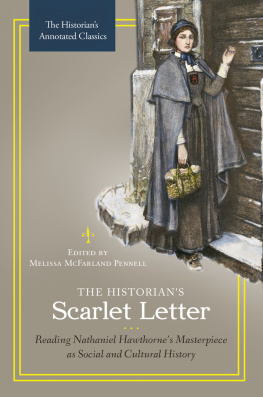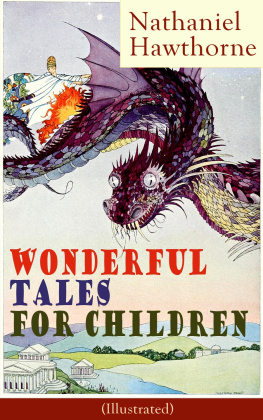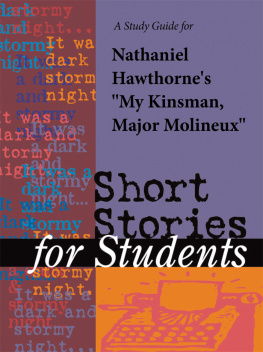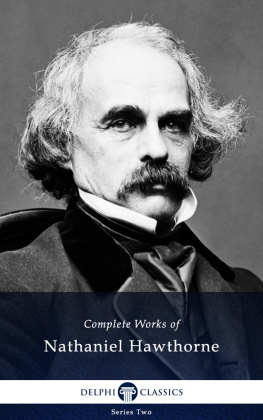The Historians Scarlet Letter
Recent Titles in The Historians Annotated Classics
The Historians Huck Finn: Reading Mark Twains Masterpiece as Social and Economic History
Annotated by Ranjit S. Dighe
The Historians Narrative of Frederick Douglass: Reading Douglasss Autobiography as Social and Cultural History
Edited by Robert Felgar
The Historians Heart of Darkness: Reading Conrads Masterpiece as Social and Cultural History
Edited by Mark D. Larabee
The Historians
Scarlet Letter
Reading Nathaniel Hawthornes Masterpiece
as Social and Cultural History

E DITED BY
M ELISSA M C F ARLAND P ENNELL
The Historians Annotated Classics
Ranjit S. Dighe, Series Editor

Copyright 2018 by Melissa McFarland Pennell
All rights reserved. No part of this publication may be reproduced, stored in a retrieval system, or transmitted, in any form or by any means, electronic, mechanical, photocopying, recording, or otherwise, except for the inclusion of brief quotations in a review, without prior permission in writing from the publisher.
The source of the original text reprinted here is the first American edition:
Nathaniel Hawthorne, The Scarlet Letter (Boston: Ticknor, Reed, and Fields, 1850).
Library of Congress Cataloging-in-Publication Data
Names: Pennell, Melissa McFarland, editor. | Hawthorne, Nathaniel, 18041864 Scarlet letter. | Pennell, Melissa McFarland, Historians Scarlet letter.
Title: The historians Scarlet letter : reading Nathaniel Hawthornes masterpiece as social and cultural history / edited by Melissa McFarland Pennell.
Other titles: Scarlet letter | Reading Nathaniel Hawthornes masterpiece as social and cultural history
Description: Santa Barbara : Praeger, 2018. | Series: The historians annotated classics | Includes bibliographical references and index.
Identifiers: LCCN 2017049751 (print) | LCCN 2017060101 (ebook) | ISBN 9781440846991 (ebook) | ISBN 9781440846984 (alk. paper) | ISBN 9781440847004 (paperback)
Subjects: LCSH: Hawthorne, Nathaniel, 18041864 Scarlet letter. | Hawthorne, Nathaniel, 18041864Social and political views. | Social valuesUnited StatesHistory19th century. | United StatesPublic opinionHistory19th century. | Literature and societyUnited StatesHistory19th century. | Literature and historyUnited StatesHistory19th century.
Classification: LCC PS1868.A2 (ebook) | LCC PS1868.A2 .P46 2018 (print) | DDC 813/.3dc23
LC record available at https://lccn.loc.gov/2017049751
ISBN: 978-1-4408-4698-4 (hardcover)
978-1-4408-4700-4 (paperback)
978-1-4408-4699-1 (ebook)
22 21 20 19 18 1 2 3 4 5
This book is also available as an eBook.
Praeger
An Imprint of ABC-CLIO, LLC
ABC-CLIO, LLC
130 Cremona Drive, P.O. Box 1911
Santa Barbara, California 93116-1911
www.abc-clio.com
This book is printed on acid-free paper 
Manufactured in the United States of America
For Steve

Contents

Series Foreword
Most if not all literature is historical, in the sense of reflecting its time and place and the history behind them. Even science fiction and fantasy literature tends to extrapolate from the present. Works from previous eras take on an additional historical dimension, as they were written in a time with which we are personally unfamiliar.
While great works of literature are timeless, we can often enjoy them more by knowing more about their historical setting and the by-now-obscure references they sometimes make. This is where Praegers Historians Annotated Classics series comes in. The literary classics selected for this series are accompanied by annotations and new essays that highlight their historical context and continuing relevance.
Ultimately, this series is about connecting each book to crucial historical issues of its timesboth the time of its setting and the time of its writing. Novels, biographies, and other literature of a particular time are indispensable markers of what people of that time said and thought. Thus, this series should be ideal for people with a strong interest in historystudents, history teachers, history buffs. The books in this series can also be valuable supplementary texts that add spice to college and advanced high school classes. History often becomes more vivid when seen through the lens of an enduring literary work from the same era.
The Historians Scarlet Letter is a superb addition to this series. Nathaniel Hawthornes novel, with its clear prose and focus on enduring issues like sexual hypocrisy, is in many ways timeless. Yet Melissa McFarland Pennells comprehensive annotations make reading or rereading the novel an even richer experience. Hawthornes text and Pennells annotations combine to provide vivid insights into the social and cultural history of America, both in early colonial Puritan New England and in Hawthornes time, the mid-19th century. Pennells introductory chapters tell engaging stories of their own. The first presents Hawthornes life and times, including his close friendship with President Franklin Pierce. The second offers a multifaceted history lesson, connecting Hawthorne to 17th-century New England and the development of the historical romance novel in the 19th century. Numerous period illustrations make the book more expansive still.
Ranjit S. Dighe
Professor of Economics
State University of New York at Oswego

Preface
I first read The Scarlet Letter in high school. I didnt grasp the deeper implications of the novel, but I was fascinated by the setting (history was a favorite subject). I also kept reading because I wondered at first if we would ever find out who Pearls father is (clearly, I missed all the clues that Hawthorne weaves into the first half of the novel!). I ended up writing a book report on the novel, most of which was probably plot summary, but I recall my teacher finding some of my ideas worthwhile, which reinforced my interest in the book. As an undergraduate, I read the novel again, this time with a better understanding of some of the conflicts that emerge between characters and tensions that affect how the main characters relate to the Puritan community of Boston. I also had more sympathy for Pearl, whom I found, in my first encounter, rather irritating. By the time I reached graduate school and had read more of Hawthornes work, I was ready to ask a wider range of questions about his novels and tales, taking a seminar that focused solely on his work and his literary and social connections. As I learned more about Hawthornes personal writing and nonfiction prose, I discovered that he was a complex figure, one who had absorbed many of the attitudes and biases of his time, particularly around the issues of race, ethnicity, and gender. This new understanding helped me to look more critically at his fiction, seeing in it what are sometimes limitations in his vision as well as his creative achievement. In The Scarlet Letter, some of those limitations emerge through the narrators comments, but Hawthorne also displays a deep awareness of the struggles his characters experience, especially in Hesters attempts to resist the demands of her Puritan community.
Next page










